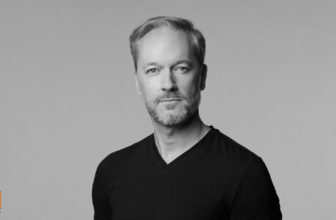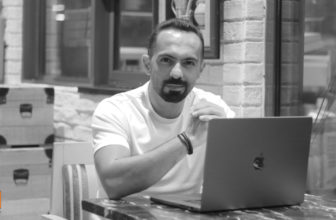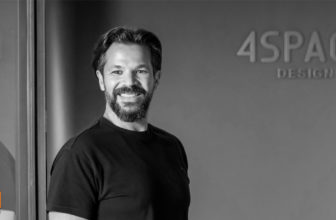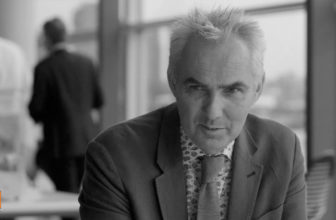3rd February 2016 will be etched down in the memory of architecture , as the RIBA (Royal Institute of British Architects) finally awarded its Gold Medal, its highest honour, to Dame Zaha Hadid, after years of being tight-lipped about it.
She is the first woman in RIBA’s history to win in it of her own accord.Here is the interview that followed between RIBA’s Tony Chapman, Head of awards at RIBA, and the Gold Medallist herself:
“What was special about the AA(Architectural Association)?”
AA for me was truly special.
I think the period between the mid-70s and late 80’s had this incredible buzz about it. Anybody who went to the school or even visited it for a cup of coffee could feel the liveliness of the whole place. It was filled with a certain energy that made things happen.
Whether it was in a professional sense, or in a purely creative stance, there were always these amazing moments that occurred in a different place and time.
It was when I won The Peak in 1983, that I was offered a space to work on the drawings for the show, and that was how the first office began.
“Which project would you have liked to have seen built?”
The Peak.
It would have been nice at that time. But even though it wasn’t built, the power of it was so enormous, because of the drawings and the style.
Not just on others but on myself, I genuinely learnt a lot. A lot of ideas culminated at that point, and it was the talk of town.
I would’ve definitely wanted the Cardiff Bay Opera House to be built. You know it’s ironic that people still go to Cardiff Bay and say that it’s a project by me.
Cardiff was such a weird situation, and for me it looks like history repeats itself with the Tokyo stadium, of course not on paper, just a similar case. The period of focus and tension for 2 years was very dire at that time. Even today, for 15 of the last 20 years in practice, people stop me somewhere at the airport or restaurants and say, ‘We’re Welsh and we’re sorry this happened.’
We were all excited about it, but the forces were against us in every way.
“But nothing is wasted?”
No nothing is wasted ever.
For Cardiff we had to work in a large team, continuously with zeal. It had multiple acquisitions, consultants and people. It was a project dealing with interesting urbanism that had small and large scale aspects.
It was our very first public domain ground project, a millennium project, teaching us a lot and that made it easier to work in other projects now.
“Were you happy about the Mind Zone – Millennium Dome exhibition space, almost an interior project?”
People were very negative about it, but I was not. I actually liked the whole experience and was happy. It was good to do a project in London. I connected to a lot of artists, made exciting collaborations. It was positive. Correlating ideas and art was very nice, and a learning experience.
“You created another temporary structure in London – The Serpentine Gallery, is it a positive thing to create temporary structures?”
I don’t mind at all. In the background of doing no work, I did many installations and exhibitions and I love it.
It has a very different kind of dynamics and its beautiful.
When we designed the Vitra Fire Station, it was purely functional and didn’t think of it as a museum but it still works.
“You won the Mies Van Der Rohe prize for a small project – The Tram Project, were you happy to win it for a car park?”
Yeah it was fine. It was an arty project actually, combining functionality with landscape, extremely graphic in its built form.
Also I didn’t know that u can’t win the Mies twice.
“But you can win the Stirling Prize twice. You’ve won it for the MAXXI Museum and Evelyn Grace Academy.”
Evelyn Grace was interesting as it concentrates on good architecture for public and educational programs, for students. It’s a space inspires them, even if they aren’t conscious of space experience. Atleast they would be curious.
The MAXXI, Rome, was a very important project for me that took a long time. I absolutely enjoyed doing it, and was particularly happy with it. Similar to the Peak, many ideas that I had thought about had culminated at that time during this project.
“The routes around MAXXI are very interesting.”
Yes a lot of art takes place around, its like wandering on a hilltop. Even though the idea of museum in a landscape was not deliberate, it feels like that. Its interesting that its rigorous in design and contextual because all the geometry is in sync with the existing geometries on site, and seeing it from varied perspectives just opens up a new possibility each time.
“You were shortlisted for the Stirling Prize four times. Let’s talk about the BMW and the Aquatic Centre.”
I really like the BMW Central, Germany. The idea of the open office plan for a white collar job, interpreted as semi open – semi separated on a terracing, with proximity to the factory is great. It certainly was a good project.
I shouldn’t be flattering my own work but it was early in my career and is undoubtedly on of my favourite projects.
I love the aquatic center too.
The whole idea of merging landscape and topography, delicately carved out landscape space makes it very interesting.
Its unique that three programs were made into one building because of the seamless connection between them. It’s a stunning example of urbanism where the elevation flows into the landscape.
“Also the Nordpark Railway Station, I’ve always loved that.”
Oh they are great projects. It was a literal one that looks like icicles.
All these experiments were a test on ideas to match with materials and the way its made. It was possible to do a thermal glass molding so we did it.
“Let’s talk about your office; you have a close working relationship with Patrik Schumacher. Would you work differently without him?”
Yes.
“So the ideas are yours?”
No no. The ideas sometimes come from me, sometimes from other people. What’s nice about the office is that everyone feels they can bring something to the table, even though it may not be a masterstroke and I may trash it. But many of the times people have really great ideas and we all share them together, inspired by early work or however.
Patrik is amazing. He is an incredible mentor; he is great with the people in the office, and an extremely great designer.
“Can the office get too large?”
Honestly I don’t like too big an office, though Patrik would love it. But I don’t. I’m a hands on sort of person, and I can’t have hands-on on 400 different things.
“You’ve always had a certain drive to finish right from the beginning, but sometimes now you can leave it to someone else in the office.”
I’m always around there though. It’s because I taught for 37 years, since I finished at the AA, so its easy for me to direct people.
“Do you still use physical models?”
I would like to, but I don’t think the craft is there anymore. Maybe it exists in other places. Everybody does 3D printing. Years of perfection in drawing, spectacular line drawings have vanished in 20 years. There is no knowledge on how to draw like that now, also the whole model is slightly different from the project, it really depends on your hand. The computer has brought something extraordinary, and what is lost by analog you now gain though something else.
“You could say that the computer was made for your kind of architecture?”
Yeah it has been an amazing experience. Although I wasn’t convinced by it right from the beginning, but it’s been truly amazing.
“What about Galaxy Soho, I love the way you dealt with it.”
That was an excellent project in Beijing. Also it’s great because it’s a commercial project. To be able to do a commercial project as a cultural one is unique. They were great clients who wanted to do a great idea. It was an enormous site, but you cannot go high, at the same time you need a level of complexity to enjoy the site with retail and offices. It involved the interpretation of blocks -each one with an atrium-, and carved spaces like a valley.
“The Contemporary Arts Center, Cincinnati, was that the end of an era? It’s not something you’ve attempted again.”
No, it was more like the early work, but it had this perspective that will force u to look different ways. I mean it had a low budget of 25 million dollars for a very large building downtown. It was a very nice experience.
Actually Cincinnati was a very good omen.
It triggered other work, and gave us confidence to the next competition and next commission.
“What does the future hold for you?”
I don’t know.
“Okay.”
I mean I have a strategy of where I should be, but I just carry on, never think of it this way.
Someone asked me the other day, ‘When are you retiring?’
And I said, “Architects don’t retire.”
“You must have had self-belief throughout your life.”
I must admit I had moments of doubt, but always thought it will eventually happen. It was a very dire period 1994-1995, during Cardiff and whenever, there was no income, hardly any work. We were 20 people working day and night, and worked like a 100.
I used to think, ‘Why are all these people here?’
They gave me amazing courage you know. But it was fun because when you work late night, you start hallucinating, almost in a delirium. And many great ideas came about it those moments.
Of course I have thought at minute times, ‘Why should I go through all this?’
But then I live and love the work I do and this field so I carried on.
“Was it difficult for you considering how there was an old saying that architecture is ruled by men?”
Well the difficulty was there right from the very beginning of the profession for a woman. The All-boys network still exists.
It’s a problem for women, not general, not just for me, but considering the circumstances at play, like doing strange work and being a foreigner.
There is prejudice that has to be eradicated. I have always maintained that things will be easier for women when the relationship between the genders are normalised, that you can act professionally anyway, when you can have a meeting with a guy in the evening and it’s not weird, when it’s easier to work with each other. Its not perfect but its changed.
“What does the Gold Medal mean to you?”
It means a lot to me because I’ve chosen to live and practice in this country. I was educated here. Not that I’m accepted but I think it’s important, and I am honoured.
Watch the full interview here:





